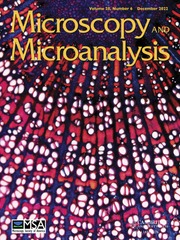Article contents
Microstructural Analysis of Dehydrogenation Products of the Ca(BH4)2–MgH2 Composite
Published online by Cambridge University Press: 06 August 2013
Abstract
The microstructural analysis of the dehydrogenation products of the Ca(BH4)2–MgH2 composite was performed using transmission electron microscopy. It was found that nanocrystalline CaB6 crystallites formed as a dehydrogenation product throughout the areas where the signals of Ca and Mg were simultaneously detected, in addition to relatively coarse Mg crystallites. The uniform distribution of the nanocrystalline CaB6 crystallites appears to play a key role in the rehydrogenation of the dehydrogenation products, which implies that microstructure is a crucial factor determining the reversibility of reactive hydride composites.
Keywords
- Type
- Research Article
- Information
- Copyright
- Copyright © Microscopy Society of America 2013
References
- 1
- Cited by




